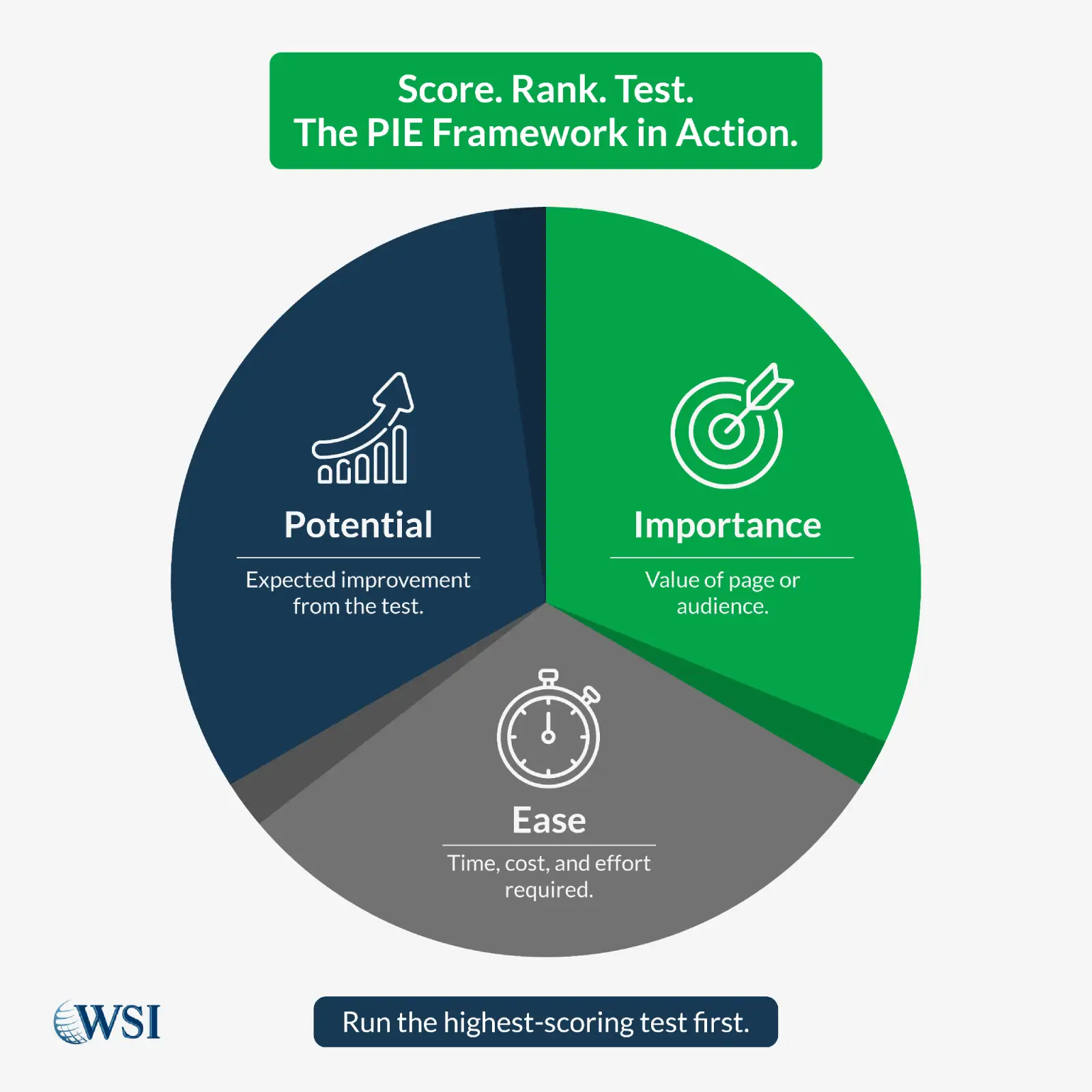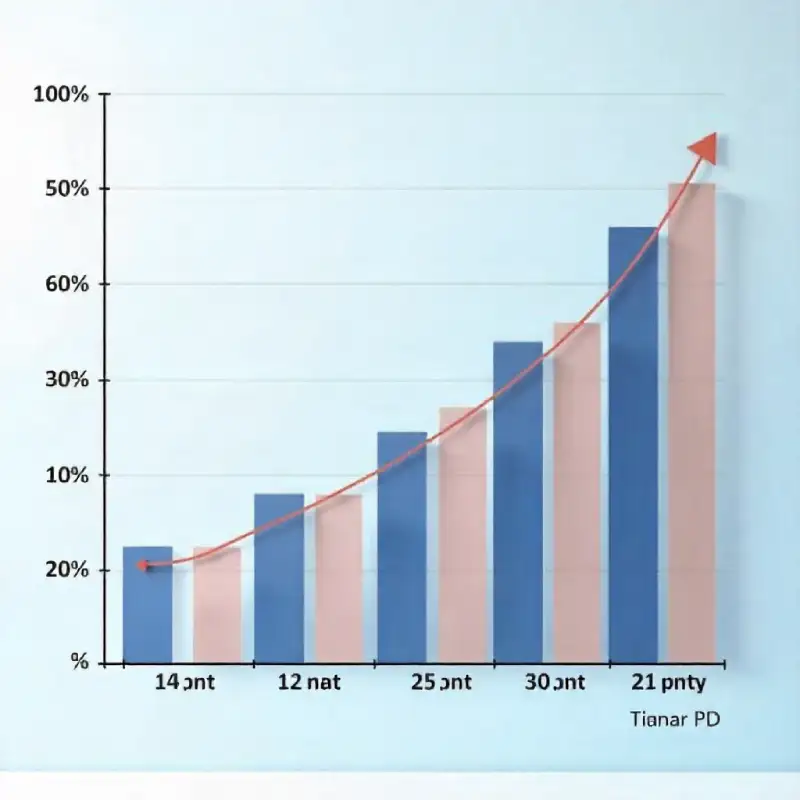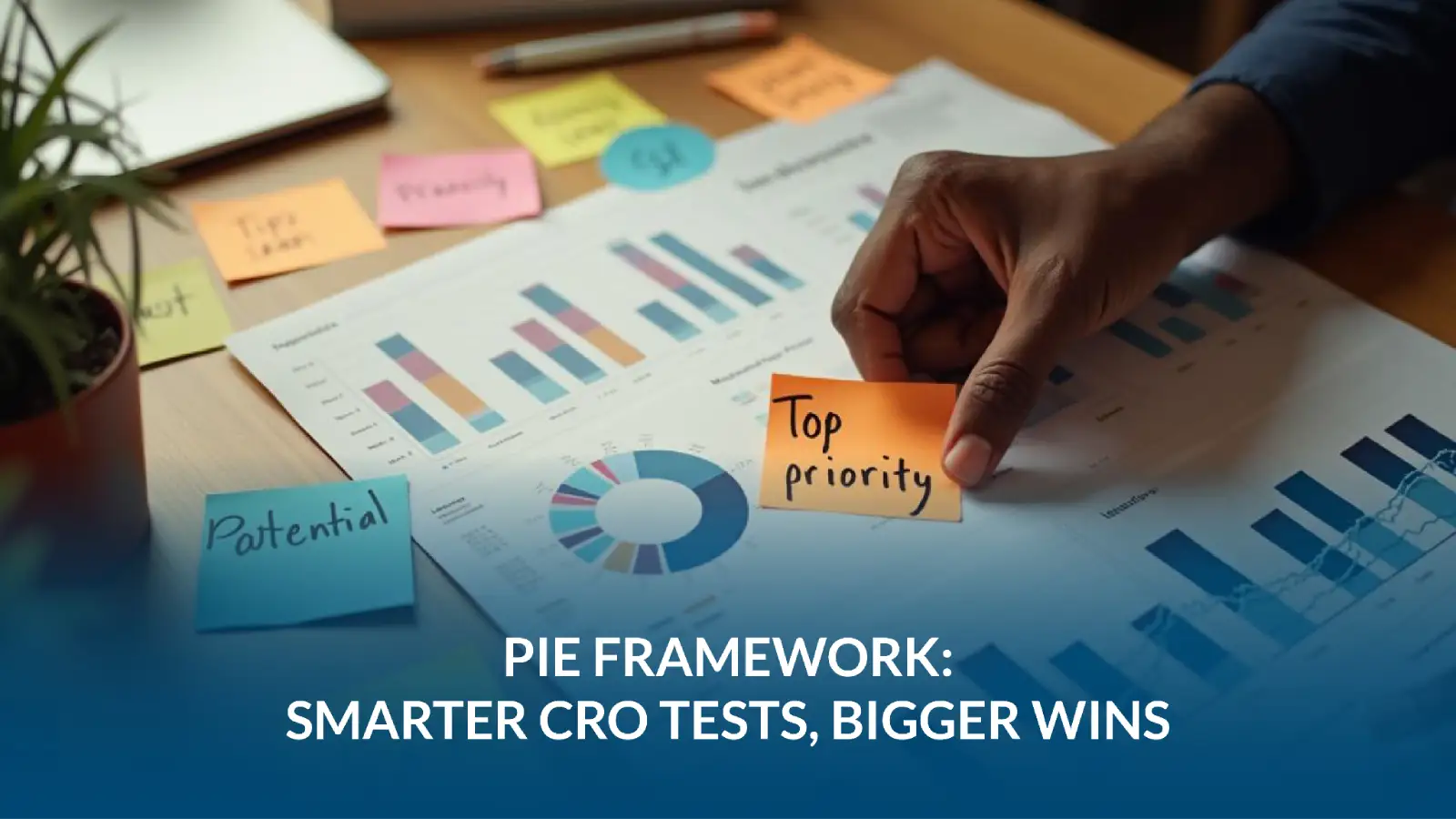Getting your conversion rate optimization (CRO) process right means more than running random experiments. Without a reliable prioritization method, you risk focusing on low-impact changes while overlooking opportunities that could deliver substantial gains. The PIE framework gives you a structured way to determine which experiments deserve attention first. By scoring each idea based on Potential, Importance, and Ease, you can make informed decisions that maximize results.
When you apply the PIE framework consistently, your CRO test prioritization becomes a data-driven process rather than a guessing game. This helps you allocate resources effectively, refine your A/B test strategy, and prioritize website experiments that truly impact your business goals.
Key Takeaways:
- The PIE framework scores experiments on Potential, Importance, and Ease to prioritize website experiments with the highest business value.
- Consistent scoring reduces bias in CRO hypothesis scoring and improves the accuracy of conversion rate testing models.
- A structured A/B test strategy ensures your resources target experiments most likely to drive measurable gains.
Contents
What Is the PIE Framework? A Breakdown
The PIE framework is a practical scoring model used by CRO teams to decide which tests to run first. Instead of relying on gut instinct, it applies numerical values to three specific factors:
- Potential: The expected level of improvement a test could bring.
- Importance: The value of the page or audience segment affected by the change.
- Ease: The time, resources, and effort required to implement the test.
Each factor is typically rated on a 1–10 scale. The scores are then averaged or added together to determine an experiment’s priority level. Compared to other conversion rate testing models, PIE is valued for its clarity and adaptability across different business types.
The method also helps balance large, resource-intensive experiments with smaller, high-return quick wins. By scoring each factor consistently, you create a testing sequence that makes logical sense and delivers compounding benefits over time.
Scoring Potential, Importance, and Ease: A Step-by-Step Guide

Applying the PIE framework starts with scoring each test idea in a way that’s consistent across your team. This ensures that decisions are made objectively, avoiding bias toward pet projects or personal preferences.
1. Scoring Potential
Potential reflects how much improvement a test could achieve if it succeeds. High-potential tests often address major usability issues, low-performing pages, or significant conversion bottlenecks.
Step-by-step:
- Review analytics for conversion gaps and bounce rates.
- Use heatmaps or session recordings to identify friction points.
- Compare performance to industry benchmarks.
2. Scoring Importance
Importance measures the business value of the affected page or element. Tests on high-traffic, high-revenue areas get higher scores.
Step-by-step:
- Identify top traffic sources and high-value pages.
- Consider lead quality and lifetime customer value.
- Align with your highest-priority business objectives.
3. Scoring Ease
Ease looks at the resources, cost, and time needed to implement a change. Smaller, faster experiments with low complexity rank higher here.
Step-by-step:
- Estimate development time and needed approvals.
- Determine resource availability.
- Consider potential technical hurdles.
Once scored, add or average the numbers for Potential, Importance, and Ease. The higher the total, the sooner the test should be run.

Want to make test scoring a bias-free process?
We apply proven CRO hypothesis scoring methods so your testing calendar prioritizes high-impact opportunities first.
When to Use PIE (and When Not To)
The PIE framework works best when you need a clear, repeatable process for deciding which experiments to run without adding layers of unnecessary complexity. Many CRO teams face the challenge of having dozens of potential ideas but limited development time, design resources, or budget. Without a system, decisions often default to opinions, which can slow progress and lead to wasted effort.
Scenarios where PIE shines:
- Websites with Significant Traffic and Multiple Conversion Points: The more interactions and user paths you have, the harder it becomes to choose where to start. PIE helps filter ideas so your team can focus on the tests most likely to influence bottom-line results.
- Teams Launching a CRO Program from Scratch: When you’re building your process, PIE provides a simple scoring method that gets everyone aligned quickly, avoiding early confusion.
- Businesses Seeking Both Quick Wins and Strategic Gains: Because PIE factors in both potential impact and ease of implementation, you can balance high-return, low-effort changes with larger, strategic projects that require more time.
Scenarios where PIE is less effective:
- Advanced Statistical Modelling Needs: If your CRO strategy is heavily data science–driven, PIE’s simplicity might not account for the depth of variables you need.
- Highly Segmented or Personalized Testing: When audience segments differ greatly in value and behaviour, a standard PIE score may not capture those differences accurately.
- Complex Experimentation Roadmaps: For programs running dozens of overlapping tests across multiple channels, PIE alone may be too broad.
In these cases, PIE can be paired with models like ICE (Impact, Confidence, Ease) or PXL (Peep Laja’s detailed scoring model) for more precision. This hybrid approach keeps the simplicity of PIE while adding layers for statistical confidence, audience segmentation, and variable weighting, making it easier to handle advanced CRO test prioritization without losing decision-making speed.
The Real-World Impact of Prioritized Testing
Applying PIE in a disciplined way can create measurable improvements in both conversion rates and revenue. For example, WiderFunnel found that structured prioritization models, including PIE, helped their clients achieve over 50% faster time-to-value for winning tests compared to ad-hoc experimentation.
When your A/B test strategy is backed by a clear scoring model, you reduce wasted spend on low-impact ideas. Your resources go toward experiments with a strong likelihood of driving significant growth. Over time, the cumulative effect of consistently running high-priority tests becomes a predictable driver of performance.

See how PIE can accelerate your CRO results.
From scoring to execution, Leap Digital ensures every experiment is a calculated step toward higher conversions.
Building Your CRO Testing Calendar With PIE
A PIE score means little if it’s not applied to an organized schedule. A testing calendar ensures ideas turn into action and results are tracked consistently.
Step-by-step:
- Collect All Test Ideas: Use analytics, customer feedback, and team brainstorming sessions.
- Apply PIE Scoring: Keep criteria consistent for unbiased results.
- Rank by Total Score: The highest-ranking experiments move to the top.
- Schedule Based on Resources: Match tests to your team’s available capacity.
- Review Regularly: Update scores as new data or insights emerge.
- Document Results: Maintain a record to refine future prioritization sessions.
A calendar built this way keeps your CRO process systematic and scalable.
Maximizing CRO Results by Applying the PIE Framework
Using the PIE framework consistently means your CRO test prioritization becomes structured, data-driven, and repeatable. It helps you prioritize website experiments that balance impact with feasibility, and it strengthens your A/B test strategy by ensuring you focus on the most promising opportunities.
When applied properly, the PIE framework allows you to avoid wasted effort, speed up results, and turn CRO into a dependable growth engine. If you want to see how it can work for your business, connect with our team today.

Ready to bring clarity to your CRO testing process?
Leap Digital helps you build a scoring system that eliminates guesswork and accelerates growth.

